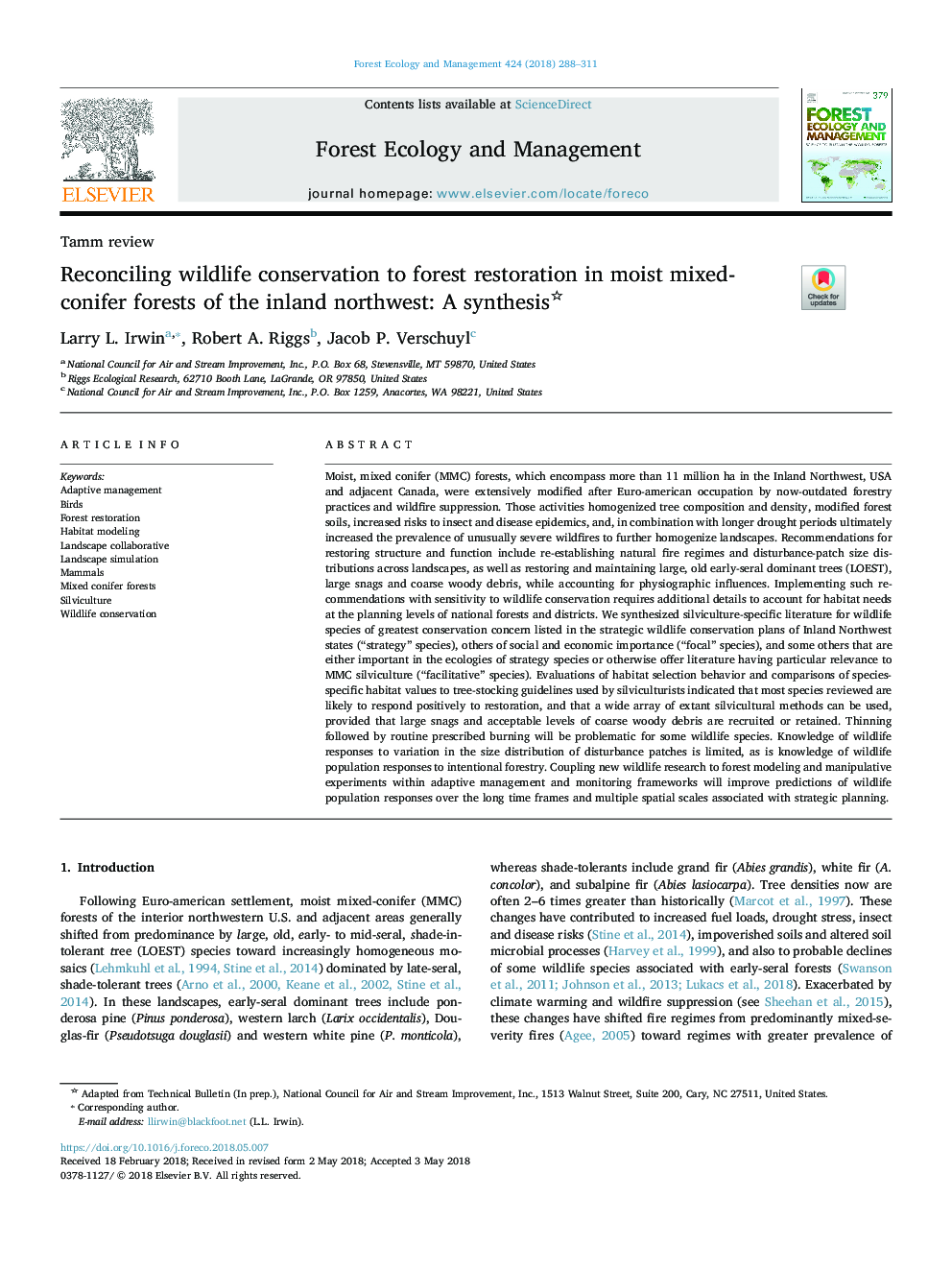| کد مقاله | کد نشریه | سال انتشار | مقاله انگلیسی | نسخه تمام متن |
|---|---|---|---|---|
| 6541578 | 1421336 | 2018 | 24 صفحه PDF | دانلود رایگان |
عنوان انگلیسی مقاله ISI
Reconciling wildlife conservation to forest restoration in moist mixed-conifer forests of the inland northwest: A synthesis
ترجمه فارسی عنوان
تطبیق حفاظت از حیات وحش به ترمیم جنگل در جنگل های مخروطی در شمال غربی کشور: یک سنتز
دانلود مقاله + سفارش ترجمه
دانلود مقاله ISI انگلیسی
رایگان برای ایرانیان
کلمات کلیدی
مدیریت انطباقی پرنده ها، ترمیم جنگل، مدل سازی محل زندگی، چشم انداز مشترک، شبیه سازی چشم انداز، پستانداران، جنگل های مخروطی مخلوط، جنگلداری، حفاظت از حیات وحش،
موضوعات مرتبط
علوم زیستی و بیوفناوری
علوم کشاورزی و بیولوژیک
بوم شناسی، تکامل، رفتار و سامانه شناسی
چکیده انگلیسی
Moist, mixed conifer (MMC) forests, which encompass more than 11 million ha in the Inland Northwest, USA and adjacent Canada, were extensively modified after Euro-american occupation by now-outdated forestry practices and wildfire suppression. Those activities homogenized tree composition and density, modified forest soils, increased risks to insect and disease epidemics, and, in combination with longer drought periods ultimately increased the prevalence of unusually severe wildfires to further homogenize landscapes. Recommendations for restoring structure and function include re-establishing natural fire regimes and disturbance-patch size distributions across landscapes, as well as restoring and maintaining large, old early-seral dominant trees (LOEST), large snags and coarse woody debris, while accounting for physiographic influences. Implementing such recommendations with sensitivity to wildlife conservation requires additional details to account for habitat needs at the planning levels of national forests and districts. We synthesized silviculture-specific literature for wildlife species of greatest conservation concern listed in the strategic wildlife conservation plans of Inland Northwest states (“strategy” species), others of social and economic importance (“focal” species), and some others that are either important in the ecologies of strategy species or otherwise offer literature having particular relevance to MMC silviculture (“facilitative” species). Evaluations of habitat selection behavior and comparisons of species-specific habitat values to tree-stocking guidelines used by silviculturists indicated that most species reviewed are likely to respond positively to restoration, and that a wide array of extant silvicultural methods can be used, provided that large snags and acceptable levels of coarse woody debris are recruited or retained. Thinning followed by routine prescribed burning will be problematic for some wildlife species. Knowledge of wildlife responses to variation in the size distribution of disturbance patches is limited, as is knowledge of wildlife population responses to intentional forestry. Coupling new wildlife research to forest modeling and manipulative experiments within adaptive management and monitoring frameworks will improve predictions of wildlife population responses over the long time frames and multiple spatial scales associated with strategic planning.
ناشر
Database: Elsevier - ScienceDirect (ساینس دایرکت)
Journal: Forest Ecology and Management - Volume 424, 15 September 2018, Pages 288-311
Journal: Forest Ecology and Management - Volume 424, 15 September 2018, Pages 288-311
نویسندگان
Larry L. Irwin, Robert A. Riggs, Jacob P. Verschuyl,
